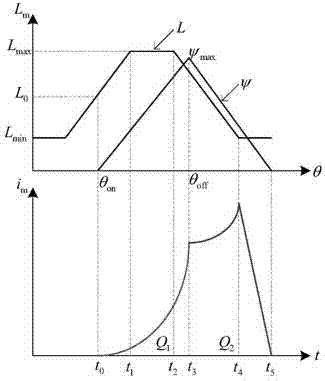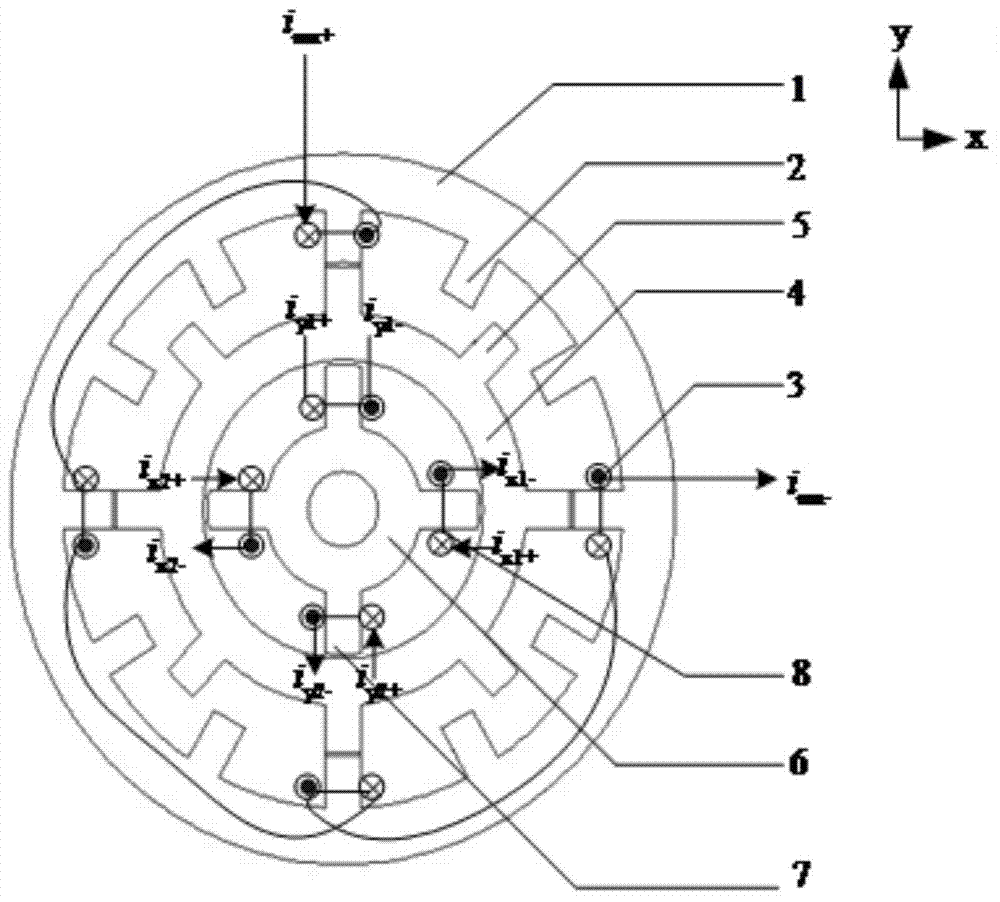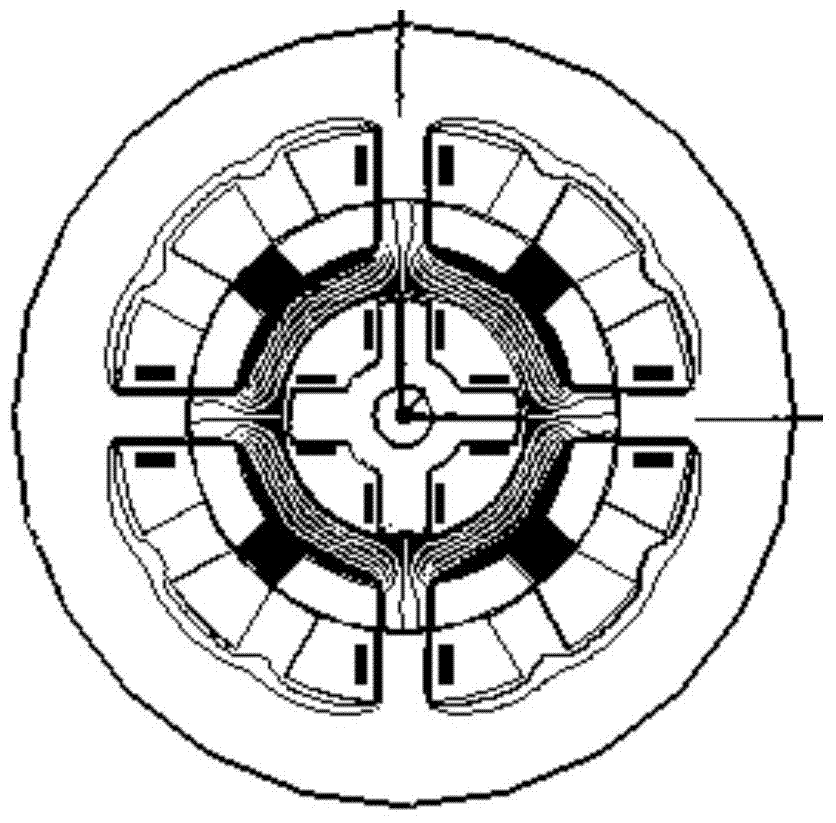Double-stator magnetic suspension switch reluctance starting/power generation machine
A switched reluctance and magnetic levitation technology, applied in electrical components, electromechanical devices, holding devices with magnetic attraction or thrust, etc., can solve problems such as mechanical bearing wear, and achieve compact structure, clear functions, and improved control flexibility. Effect
- Summary
- Abstract
- Description
- Claims
- Application Information
AI Technical Summary
Problems solved by technology
Method used
Image
Examples
Embodiment Construction
[0029] In order to make the technical means, creative features, goals and effects achieved by the present invention easy to understand, the present invention will be further described below in conjunction with specific embodiments.
[0030] see figure 1 , the dual-stator maglev switched reluctance starter / generator of this embodiment includes an outer stator 1, a rotor 4 and an inner stator 6 to form a three-salient pole structure, and the rotor 4 and the inner and outer stators are nested concentrically together.
[0031] Twelve main winding poles 2 are arranged on the outer stator 1 at equal intervals. The pole width of the main winding poles 2 is 15°, and the main windings 3 are wound respectively. phase, divided into three phases ( figure 1 Only one phase is drawn, and the other two phases are omitted).
[0032] Eight rotor salient poles 5 are arranged at equal intervals on the rotor 4 without any winding.
[0033] The four floating poles 7 are arranged on the inner st...
PUM
 Login to View More
Login to View More Abstract
Description
Claims
Application Information
 Login to View More
Login to View More - R&D
- Intellectual Property
- Life Sciences
- Materials
- Tech Scout
- Unparalleled Data Quality
- Higher Quality Content
- 60% Fewer Hallucinations
Browse by: Latest US Patents, China's latest patents, Technical Efficacy Thesaurus, Application Domain, Technology Topic, Popular Technical Reports.
© 2025 PatSnap. All rights reserved.Legal|Privacy policy|Modern Slavery Act Transparency Statement|Sitemap|About US| Contact US: help@patsnap.com



